Combat ships. Cruisers. Wild dingo dogs
These ships are sometimes ranked among the improved series of cruisers of the "Linder" class. But in fact, this does not correspond to reality, all that distinguished the ships from their predecessors was the principle of placing the power plant. The rest is the "Leaders" as they were.
However, the three ships in question were slightly different from the rest. Light cruisers of the Perth class (sometimes called the Sydney class) served in the Australian military navy.
Initially, when laying down, as is usual for British light cruisers, the ships were given the names of Greek mythological characters: "Amphion", "Apollo" and "Phaethon". But after the construction and transfer of the KVMF to Australia, the ships were renamed in honor of Australian cities and received the names "Perth", "Sydney" and "Hobart".
So, these are "Leaders". Five previous ships were built according to the project, and three of our heroes received some changes.
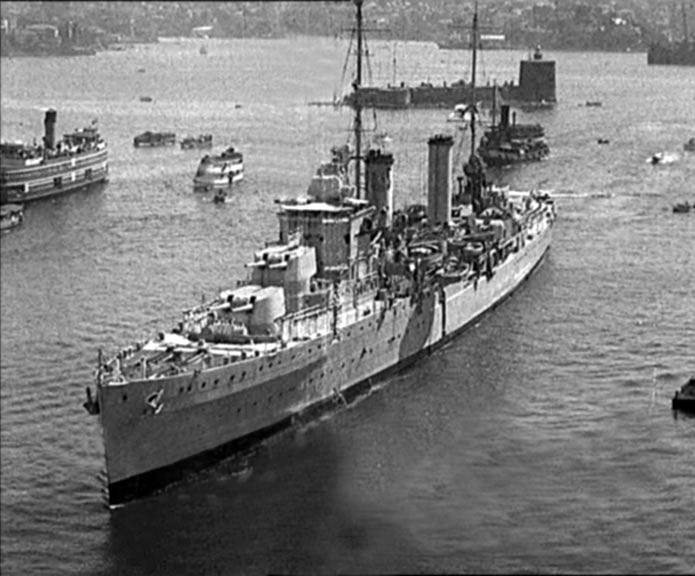
In general, when designing the Perth-class cruisers, the designers faced the same tasks as when designing the Linder-class - to create a light cruiser with 152-mm artillery, with increased cruising range and seaworthiness.
Initially, within the framework of the project, it was supposed to replace 2 and 3 towers with three-barreled ones, bringing the number of barrels of the main caliber to 10. But calculations showed that the displacement would increase to 7 tons, and the speed would decrease by almost a knot. And this modification had to be abandoned, mainly due to various agreements on displacement limitation.
But the power plant was significantly redesigned. A variant with four boilers and four echelon turbines was used. Due to this location, we had to add another chimney and make the body a little wider (17,7 m). In addition, the total length of the boiler rooms and engine rooms also increased, which means that the length of the armored belt, which was supposed to protect them, increased from 25,6 to 43 m.
So the displacement still increased, but in the conditions of the outbreak of the war, no one gave a damn about it.
The cruisers did not have anti-torpedo protection as such, but its role was played by a double, and in the area of the artillery cellars - by a triple bottom. The bottom compartments were used to store water and fuels and lubricants, so they could well play the role of protecting the bottom from underwater explosions.
As a result, the displacement increased to 7 tons.
Reservation
The basis of the armor was an armored belt with a length of 43 meters and a thickness of 76,2 mm made of armor plates with a 25,4 mm steel lining. It protected the boiler rooms and engine rooms, the height of the belt reached the upper deck, and in the area of the engine rooms to the main deck. The armored belt was completed by traverses with a thickness of 25,4 mm, from above the belt was covered by an armored deck with a thickness of 31,7 mm. The bulkheads between the engine rooms and the boiler rooms were made of 6,3 mm thick armor.
The artillery cellars of the main caliber had the following booking according to the box principle: side - 89 mm, top - 51 mm, front and rear - 76 mm. Cellars for universal guns were armored with sheets 25,4 mm thick.
Artillery fire control posts, radio room, main caliber turrets, barbets and feed pipes had 25,4 mm armor.
The steering mechanisms were protected by 37 mm deck armor and 31 mm bevels with 25 mm traverses.
The bridge and the director of the main caliber were protected by armor with a thickness of 12,7 mm.
This reservation was considered insufficient on the one hand, on the other hand, Britain had heavy cruisers with weaker booking. The Linders' lack of armor was compensated for by good driving characteristics and advanced division into compartments, which should have saved the ships from sinking in case of damage to the hull.
Power plant and driving performance
This is where the differences began. It was on the Perth-class cruisers that the echelon arrangement of the power plant was used. The alternation of engine and boiler rooms made it possible to avoid the simultaneous failure of all machines or all boilers when the adjacent compartments were flooded.
This is not an innovation; this is how the power plants were assembled in many fleets of the world.
Unlike the Linders, the Perths received only four boilers instead of six in their power plant, but these boilers were more powerful and produced more steam. The boilers were located in two compartments, the smoke was discharged into two pipes
In the bow boiler room, the boilers were located side by side, and in the stern - one after another, which made it possible to equip the propeller shaft corridors without any problems. The weight of the power plant has decreased by 110 tons.
The cruising speed slightly decreased compared to the "Linders", 31,7 knots versus 32,5 knots, but the cruising range increased significantly, 6 miles against 000. fuel made it possible to achieve such results.
Crew and habitability
The number of the crew at the pre-war rate was 570 people. The officers traditionally lived at the stern, the elders in single cabins, the younger ones in double cabins. The sailors lived in cabins and slept in hammocks. The living quarters were heated, if necessary, with steam, and there was forced ventilation. The cruiser was equipped with showers, laundries and drying rooms.
As the air defense systems were modernized in the direction of their strengthening, the number of crew members also grew. It was believed that the Perth-class cruiser could painlessly carry a crew of 650 people on board. However, "Hobart" by the end of the war had a crew of 900 people.
weaponry
Main caliber
The main caliber of the cruisers consisted of eight 152 mm Mark XXIII guns, located in pairs in four Mark XXI gun turrets.
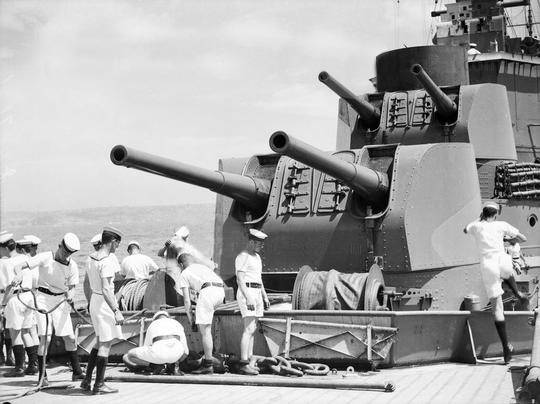
The Mark XXIII cannon fired a shell weighing 50,8 kg with an initial speed of 841 m / s for a range of up to 23 km.
The combat rate of fire of the gun was 8 rounds per minute.
Auxiliary / anti-aircraft artillery
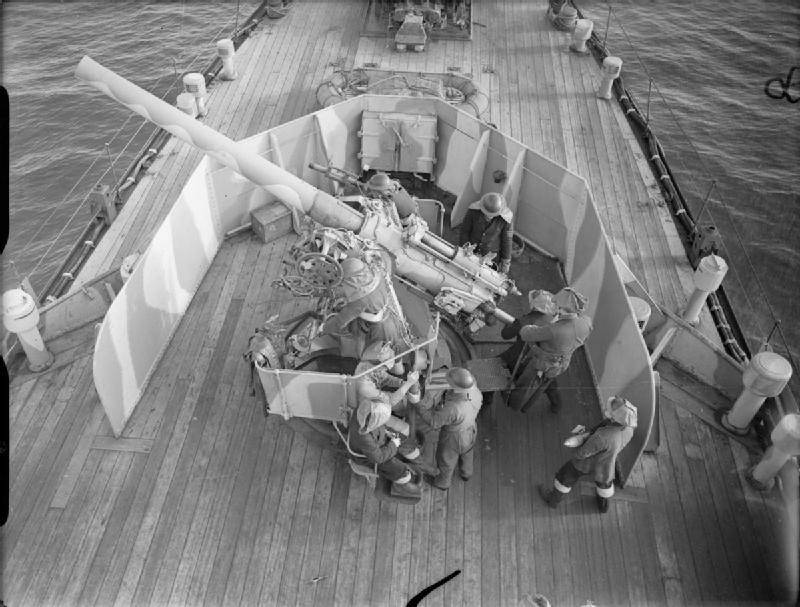
The universal artillery was represented by the classic 102-mm Mk V guns. Four of these guns were mounted on single rigs without shields in the area of the chimneys on the side.
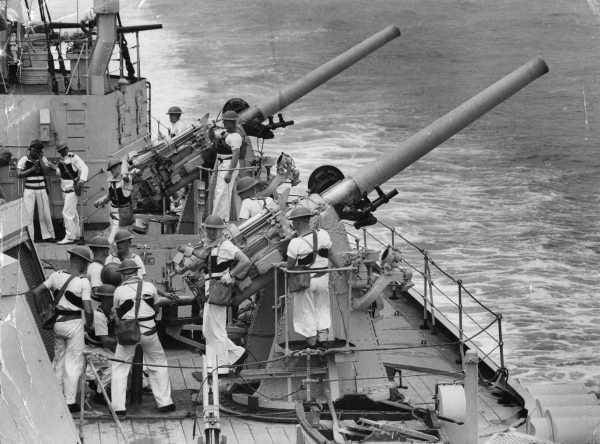
The semi-automatic gun reloading system made it possible to fire up to 20 shells weighing 15 kg per minute with an initial speed of 811 m / s for a range of up to 18 km. Gun ammunition - 200 rounds per barrel.
Small-caliber anti-aircraft armament consisted of three quad mounts of 12,7 mm Vickers Mark III machine guns.
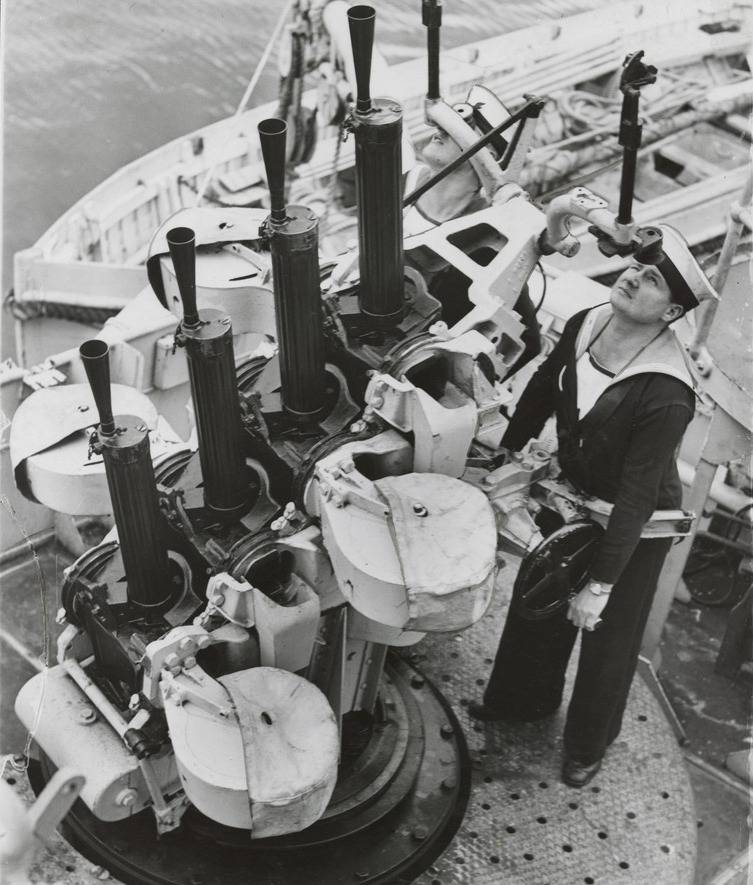
The installations were combat-ready at ranges from 800 to 1500 meters. In addition to these machine guns, there were also 7,69-mm hand-held "Lewis", which could be used from light tripods or arm boarding parties with them.
Mine torpedo armament
The cruisers' torpedo armament, again, classically consisted of two four-tube 533-mm torpedo tubes.
Ammunition was 8 torpedoes, reloading at sea was not provided.
The ships' mine armament consisted of 15 depth charges, six were stored on a rack in the stern, and nine in the stern artillery cellar.
Paravan-guards from the Vickers Mk.IV were used as an anti-mine weapon.
Aviation Armament
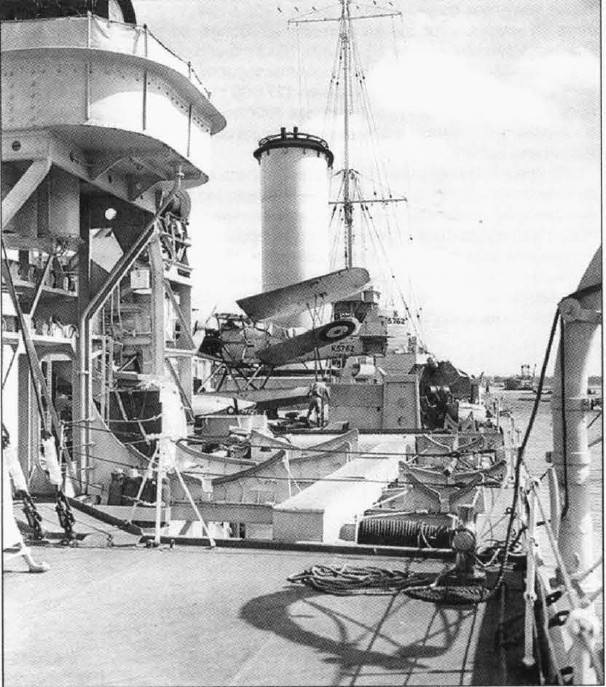
The Perth-class cruisers carried Hawker Osprey float biplanes. The launch from the ship was carried out using a rotary powder catapult, the planes were lifted with an electric crane. By the way, the cranes could also be used for lifting boats and lifeboats.
Upgrades
In Britain, cruisers were upgraded once. Before being transferred to the Australian Navy in 1938. Then, on the cruisers Perth and Hobart, single mounts of 102-mm guns were replaced by twin Mk. XIX, and a more powerful catapult was installed on "Hobart".
Then, in 1941, four single-barreled 20-mm Oerlikons were installed on the Perth, two on the 2nd and 3rd turrets and two on the superstructure instead of machine guns.
Combat application
"Perth"
Perth's combat service began in late 1939 with patrol operations in the Atlantic. In October, the cruiser was involved in the search for the German heavy cruiser Deutschland. The radio operators of the cruiser "Perth" detected the signals of the radio station "Deutschland", but the German raider was not detected.
In 1940, Perth mainly escorted Australian convoys to the Middle East and patrolled the Australian coast. An exception was the search in November for the German raider "Cormoran", but the search did not return any results.
In December 1940, the cruiser was transferred to the Mediterranean, based in Alexandria. Perth took part in the conduct of the Maltese convoys. On January 16, 1941, in the port of Malta, the cruiser came under attack by German aircraft.
Two half-ton bombs fell between the cruiser and the aircraft carrier Illastries, one between Perth and the dock. The blast wave lifted the ship above the water, bent the shafts of the starboard propellers and caused cracks in the oil tanks... The cellars of the 'X' and 'Y' guns were flooded with water, the bearings of the turrets were partially damaged.
A nearby Essex ammunition transport caught fire and the Perth's sailors had to fight the fire in order not to cause an ammunition explosion on the Essex. The Perth sailors rescued transport, ammunition, and possibly their ship.
In the second half of January, the cruiser was involved in patrolling the area of Crete and the Aegean Sea. In late February, he covered the landing of troops on the island of Kastelorizo, south of Turkey. In March he accompanied convoys from Alexandria to Greece.
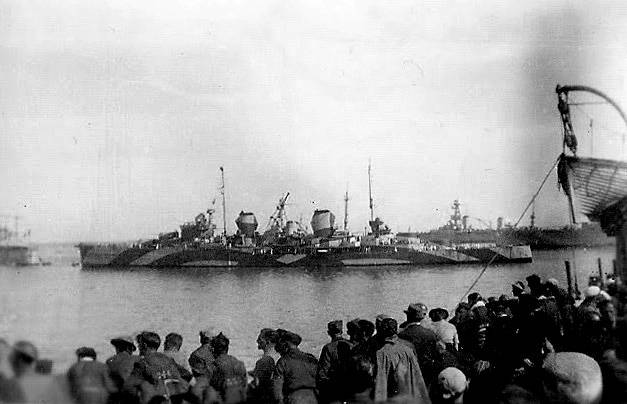
"Perth" in Alexandria, 1941.
On March 29, 1941, the cruiser took part in the battle off Matapan Island. "Perth" together with the cruisers "Orion", "Ajax" and "Gloucester" with four destroyers took part in the battle off the island of Gavdos. Then the parties suffered no losses. In general, the battle at Cape Matapan cost the Italians three heavy cruisers and two destroyers.
In May, the German invasion of Crete began. The cruiser repelled the attacks of the Luftwaffe and, after using up the ammunition, withdrew to Alexandria. From there "Perth" made a flight to evacuate troops from Crete. As a result of the air raid, he received a bomb in the boiler room and went to Syria for repairs.
After the repair, the cruiser took part in an operation against the Vichy French troops who controlled the Haifa area. The gunners destroyed two French batteries.
In July 1941, the Perth returned to Australia. In December, Australia declared war on Japan and the ship began active operations, escorting convoys from Australia to New Guinea, to the island of Java and to Batavia in the Dutch East Indies.
In Batavia, the ABDA task force was formed from the flagship of the Dutch cruiser De Ruyter, the British Exeter, the American Houston, the Dutch Java and the Perth itself, representing Australia, and 9 destroyers (2 Dutch, 3 British, 4 American ). The unit was supposed to search and destroy Japanese ships.
In the Java Sea, ABDA clashed with a detachment of Japanese ships covering a large convoy of 40 transports. The detachment consisted of 2 heavy cruisers, 2 light cruisers and 14 destroyers.
So on February 27, 1942, a battle took place in the Java Sea.
The leadership of the allied unit in the person of Admiral Doorman lost the battle outright, having lost 2 cruisers and 5 destroyers. The Japanese suffered no losses and the transports with the troops safely reached the island of Java.
"Perth" survived in this battle, receiving quite minor damage. Together with the cruiser "Houston" and one destroyer, they went to Batavia for replenishment of ammunition.
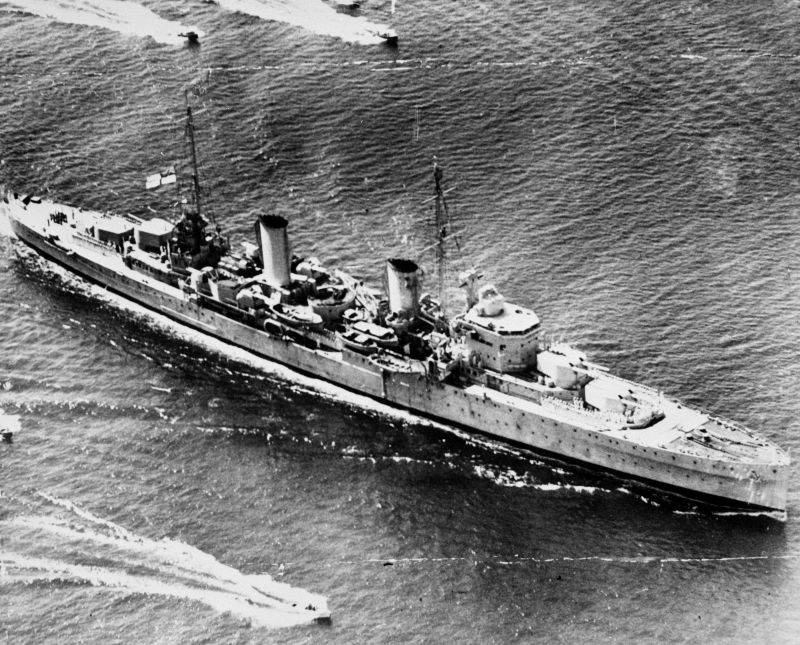
On the afternoon of February 28, 1942, the Perth and Houston reached Batavia. The port was being prepared for evacuation and explosions, so it was not possible to replenish the supply of fuel and ammunition. The cruisers were ordered to follow through the Sunda Strait to Chilachap, where the Allied forces were gathering.
The intelligence did not know that Japanese ships with a landing party had already entered the Sunda Strait.
"Perth" and "Houston" in a direct course ran into the escort of transports, consisting of destroyers. The cruisers engaged Japanese ships. While the cruisers were shooting with Japanese destroyers, the cruisers Mogami and Mikuma approached, along with 12 more destroyers.
87 torpedoes were fired at Houston and Perth. Having received 2 torpedoes, "Perth" sank at about 23:40, "Houston" was able to stay afloat for almost an hour, but then also sank. 693 people from the crew of the Houston were killed, 375 people on the Perth. The commanders of the cruisers died along with the ships.
"Sydney"
At the outbreak of World War II, Sydney was stationed at its base in the port of Fremantle. The first combat missions in which the cruiser took part were patrolling and escorting ships in Australian waters and in the Indian Ocean.
In May 1940, the cruiser was sent to the Mediterranean, where she joined the British forces.
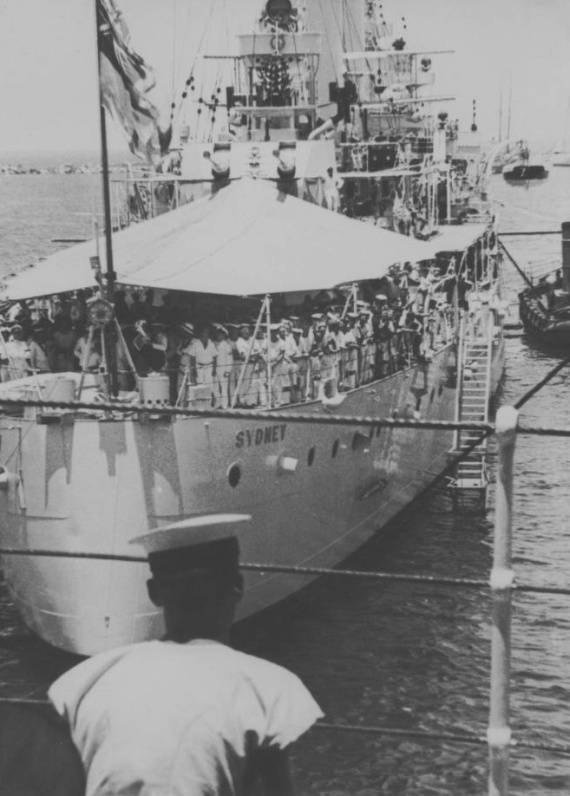
On June 10, 1940, Italy declared war on Great Britain, and on June 21, the ship took part in a combat operation for the first time: the shelling of the Italian port of Badriya. The port was shelled, and the cruiser's spotter plane was mistakenly shot down by British aircraft.
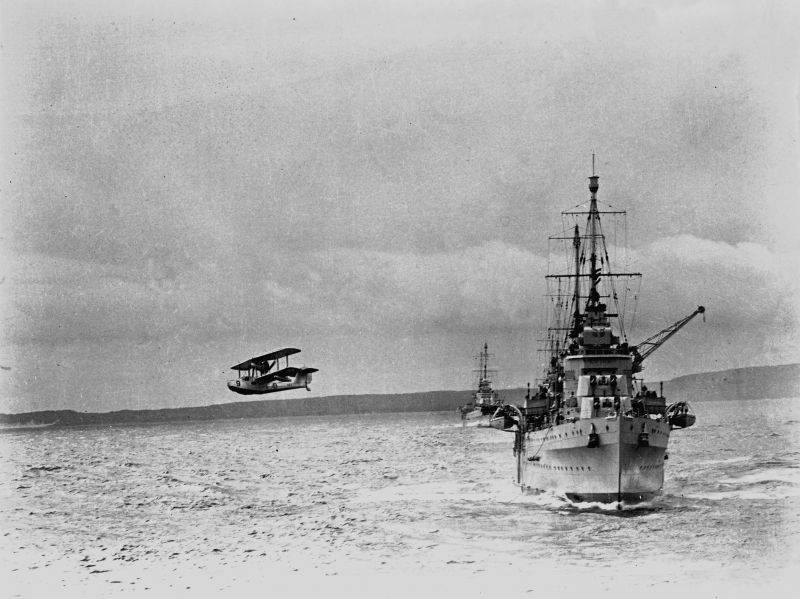
On June 28, 1940, Sydney participated in the pursuit of 3 Italian destroyers discovered by Allied aviation. Realizing that they could not escape pursuit, the commander of the destroyer "Espero" took a fight with the cruiser in order to let the other two ships escape.
During the battle between Espero and Sydney, two destroyers really left, and Espero was sunk. Sydney rescued 47 Italian sailors.
On July 9, 1940, "Sydney" took part in the battle of Calabria, where she acted together with the rest of the cruisers of the 7th squadron.
On July 18, Sydney left Alexandria with five destroyers in the direction of Athens, where they were to join the British destroyer flotilla in the Aegean Sea. On July 19, the cruiser's radar detected two Italian cruisers, Giovanni della Bande Neri and Bartolomeo Colleoni, which were sailing to Libya with military supplies right on the decks.
The Sydney engaged the Italian cruisers and sank the Bartolomeo Colleoni and seriously damaged the Bande Nere. V stories this battle remained like the battle at Cape Spada.
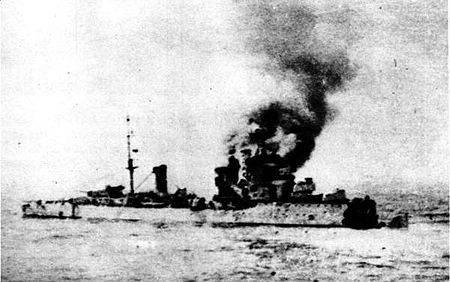
"Bartolomeo Colleoni" in the battle at Cape Spada
Until the end of the year, Sydney was also marked by the sinking of the Italian tanker Ermioni. In January 1941, the cruiser sailed back to Australia.
After repairs and rest of the crew, the cruiser was sent to the Indian Ocean, where he also took up escorting convoys to Singapore.
On November 19, 1941, the cruiser met with an unknown merchant ship, which was sailing in the direction of Australia. The commander of the cruiser made an unacceptable mistake and approached the unknown vessel, which presented itself as the Dutch transport "Straat Malakka", at a distance of 1,3 km.
For almost an hour the unknown ship fooled the Australians until the Dutchman raised the flags of the Kriegsmarine and opened fire on the cruiser.
The "Dutch merchant" turned out to be the famous Kriegsmarine auxiliary cruiser "Cormoran". Record holder in destroyed tonnage.
Half an hour of combat at dagger range - and the ships parted. The Sydney received heavy damage from the precise fire of 150 mm German guns, but retained controllability and tried to escape. But in the end, the ship capsized and sank.
All 645 crew members were killed, the largest loss of the Australian Navy in history.
"Cormoran" also did not survive and went to the bottom.
Hobart
The cruiser began the war as part of the East India Station on October 14, 1939. Together with the British cruiser Birmingham, Hobart patrolled Sumatra and the Sunda Strait.
Until February 1940, "Hobart" carried out the convoy of transports to various places in the Dutch East Indies.
In April 1940, the cruiser joined the Red Sea escort forces. Based on Aden, and when Italy entered the war, the Hobart repelled attacks from Italian aircraft and fired at various Italian military targets. He transferred troops from Aden to Somalia, and then took part in the evacuation of British troops from the port of Berbera in Somalia.
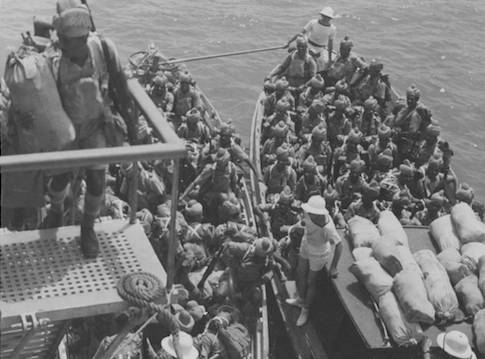
Evacuation of troops from Somalia
An interesting point: one 47-mm Hotchkiss salute gun was removed from the cruiser for use as an anti-tank gun.
Three volunteer sailors went to the front with the gun. Sailors with a gun took part in rearguard battles, covering the retreat of their units from the advancing Italians. For a long time, the sailors were considered dead, but in 1941 they were released from Italian captivity.
As part of the Red Sea Forces, "Hobart" served until October 1940, then left for Australia.
The cruiser spent the first half of 1941 in the waters of Australia and New Zealand. Then the ship was transferred to Alexandria and "Hobart" took part in the operations of the Mediterranean squadron. The cruiser fired at Tobruk and Bardia and delivered reinforcements to units in the Western Desert.
Hobart has campaigned in Cyprus, Malta and Syria.
Moreover, the cruiser repeatedly participated in battles and was attacked by aircraft, but did not receive any damage.
After Japan entered the war in December 1941, the Hobart sailed back to Australia.
Until May 1942, the cruiser was engaged in escorting various convoys and repelling air attacks.
In May 1942, the Hobart took part in the Battle of the Coral Sea. She covered US aircraft carriers; on May 7, the cruiser repelled attacks from torpedo bombers and bombers all day. The Hobart escaped damage by dodging all torpedoes and bombs while shooting down three Japanese aircraft.
In June 1942, the cruiser was transferred to the TF44 tactical formation to support amphibious operations. He covered landings on Guadalcanal, Tulagi, New Georgia, New Guinea, patrolled in the Coral Sea.
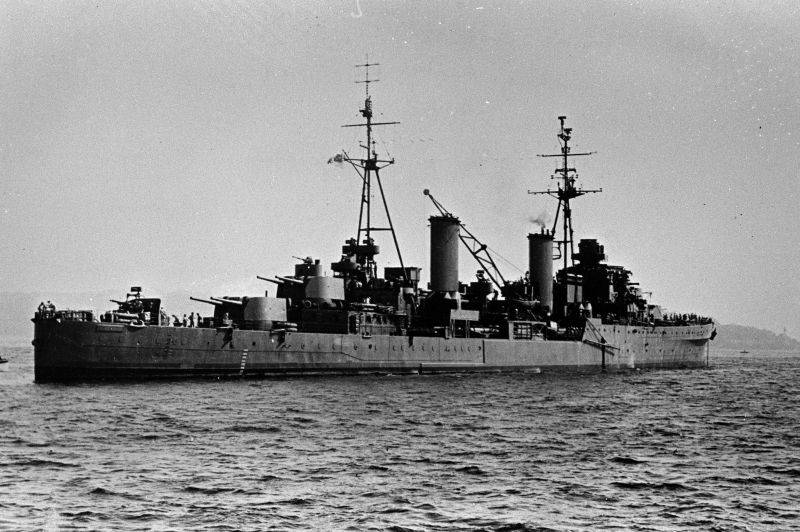
On July 20, 1943, the Hobart was sailing to Espiritu Santo, Vanuatu, and received a torpedo from the Japanese submarine Ro-106. The torpedo hit the port side, causing significant damage.
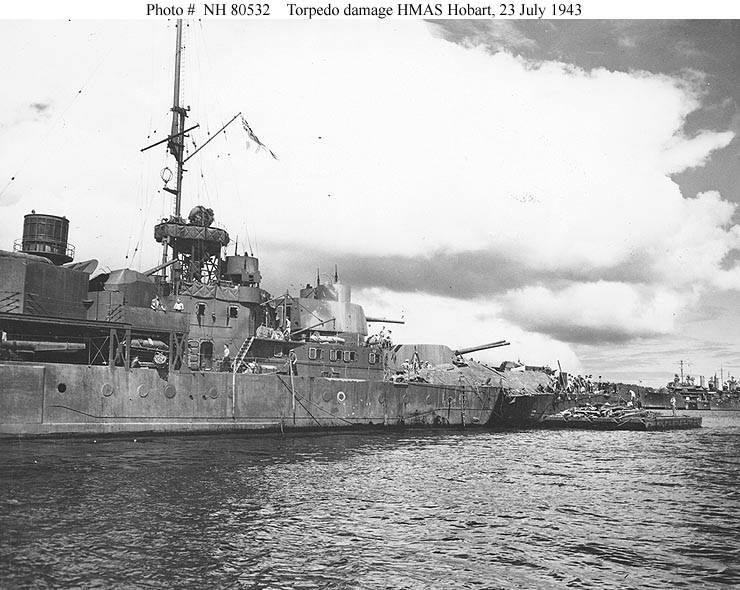
Killed 13 officers and sailors, the ship reached Vanuatu, where initial repairs were carried out, which continued in Sydney.
Only in December 1944 was the repair completed, and the ship returned to the ranks of the Pacific squadron only in February 1945. And already in March, the cruiser took part in amphibious operations in the Philippines. Then there were the landings on Borneo, Vivak in Papua New Guinea, the liberation of Brunei, the landing on Balikpapan.
On behalf of the Australian Navy, Hobart took part in the signing of Japan's surrender in Tokyo Bay.
After the war, until 1947, Hobart was a permanent member of the support forces for the occupying forces in Japan. In 1947, the ship was put into reserve. The Navy considered converting the Hobart into a training ship, work was carried out from 1953 to 1956, but the conversion was not completed. In February 1960, the ship was decommissioned and sold, ironically, to the Japanese firm Mitsui for metal.
If we compare the cruisers of the Perth type with their counterparts, then with the same armament, the advantage in seaworthiness and anti-aircraft armament is noticeable. In terms of air defense, perhaps, the Americans were better.
The British cruisers turned out to be better balanced in their class, but Great Britain did not build further cruisers armed with eight main battery guns. The Leaders gave way to more well-armored ships armed with 9-12 guns.
But this happened already during the war, when there was no longer any talk of any agreements on restrictions.
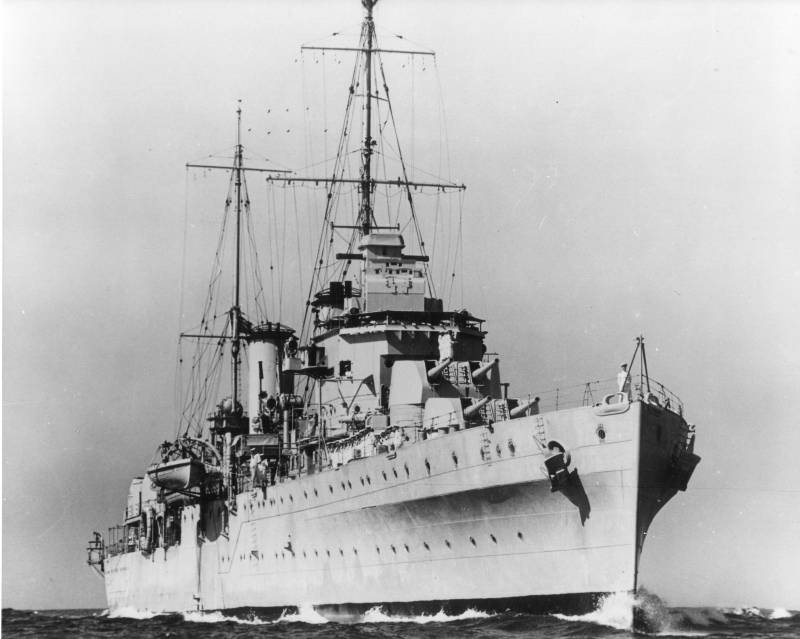
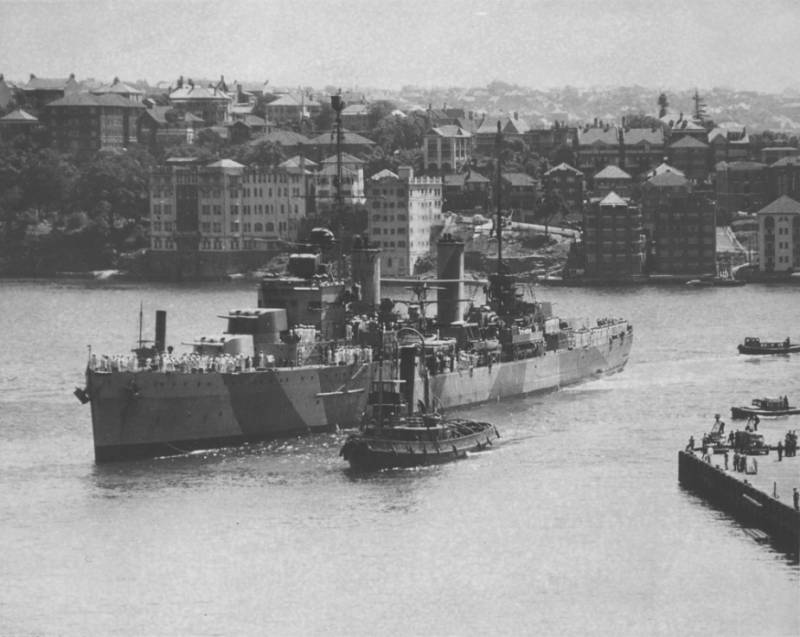
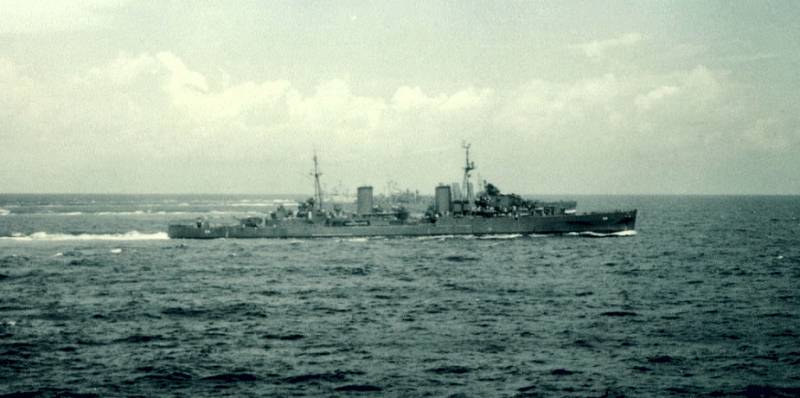
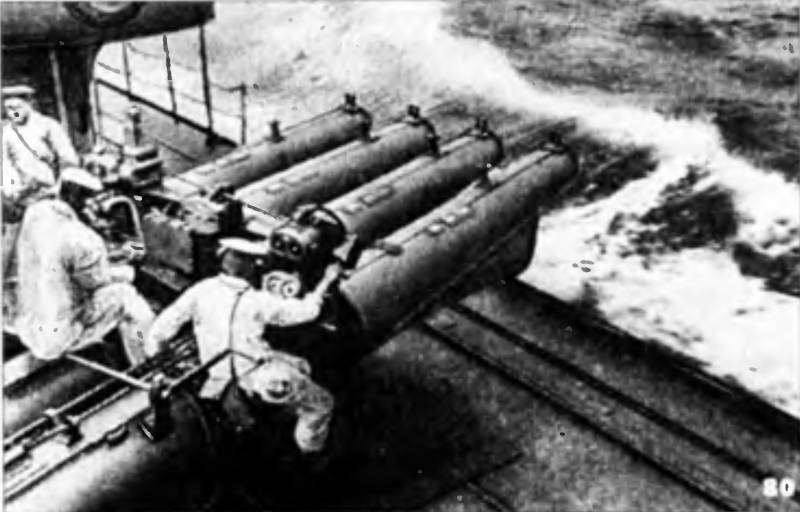
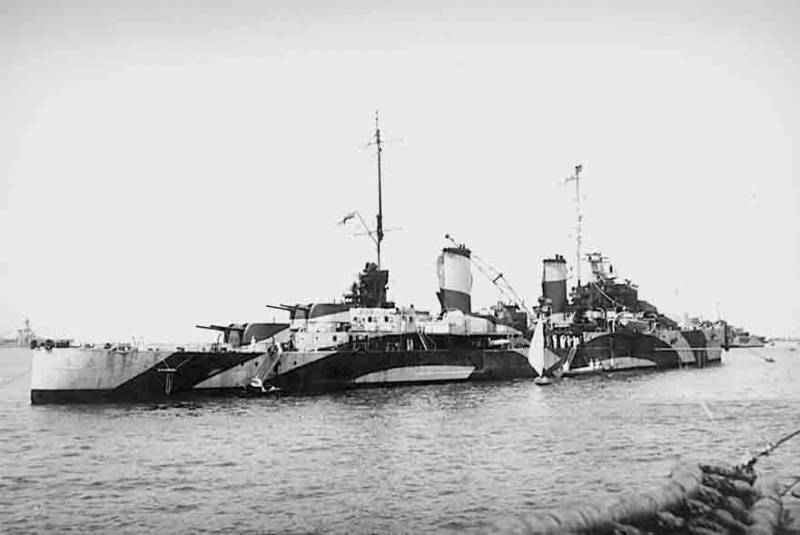
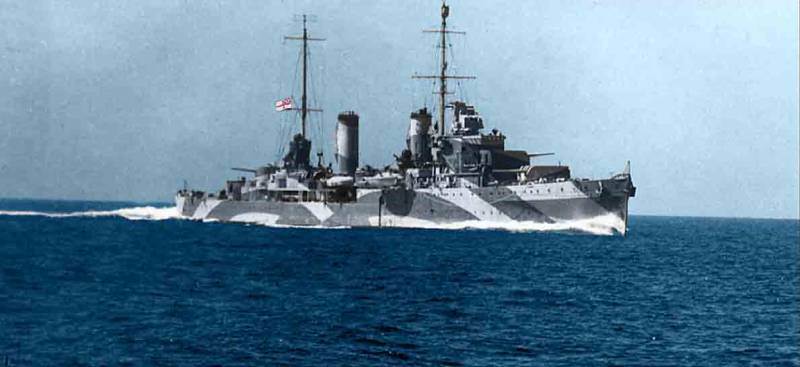
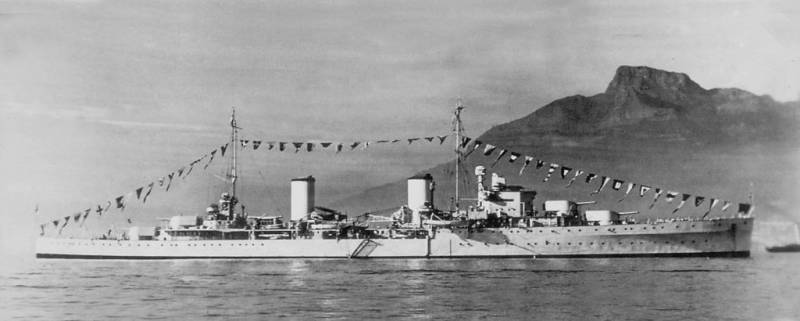
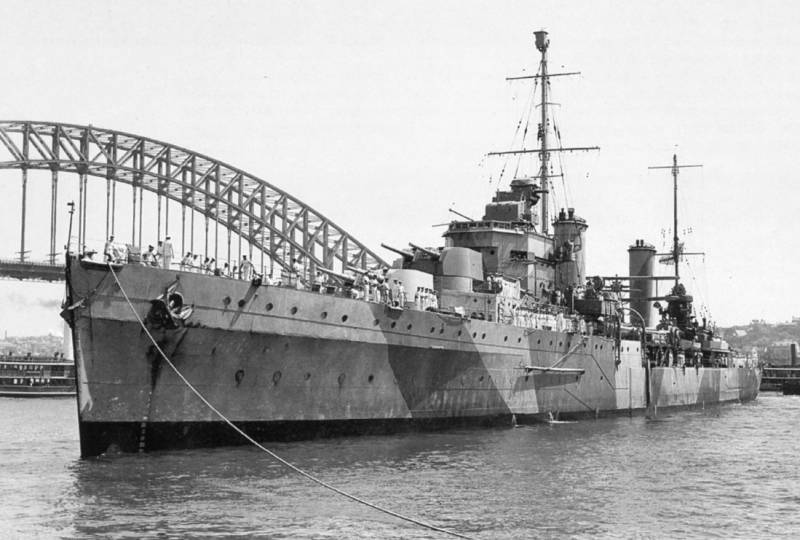
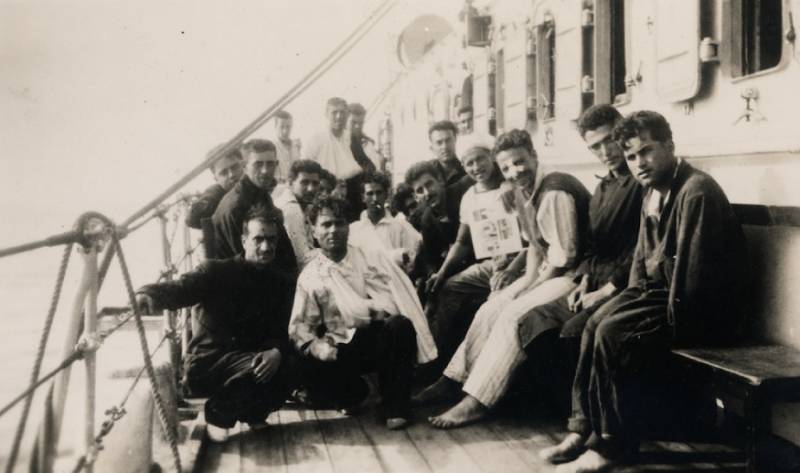
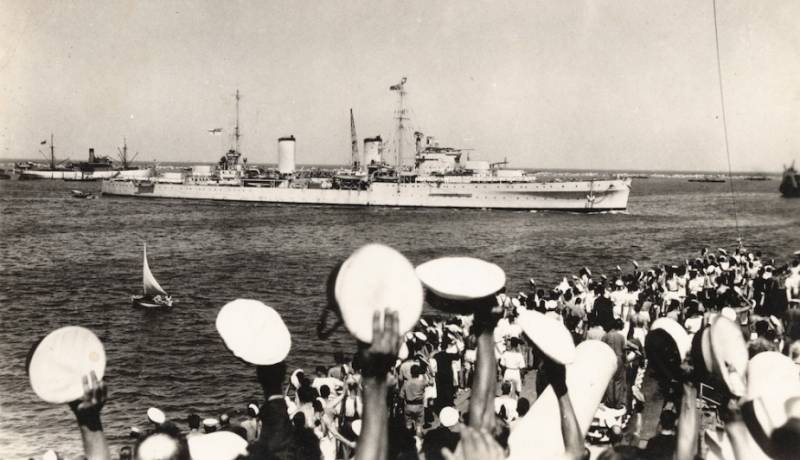
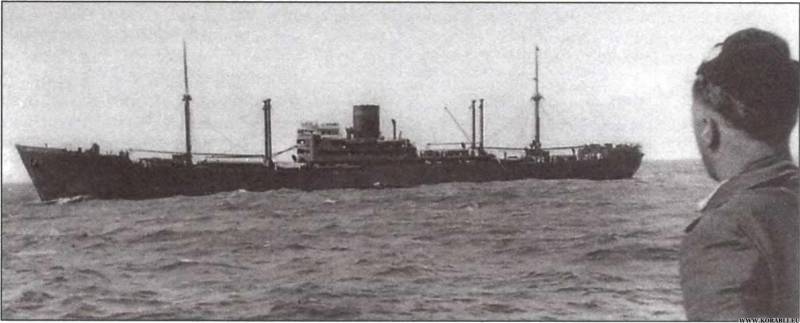
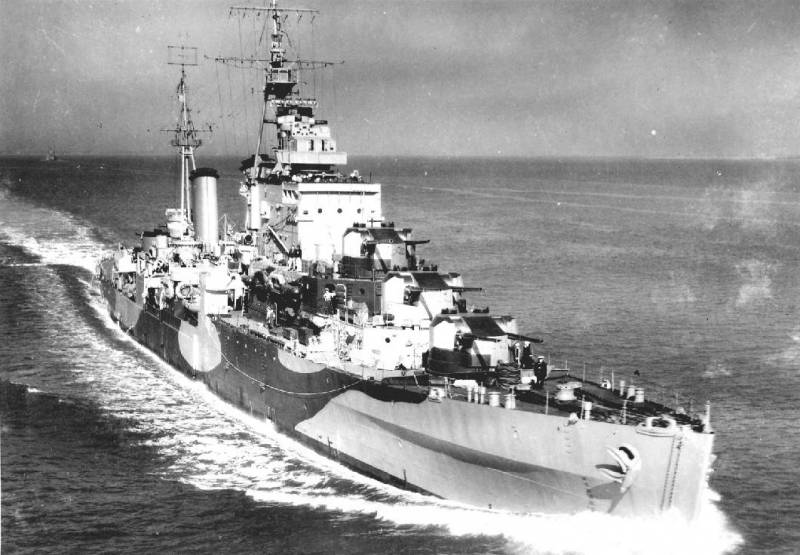
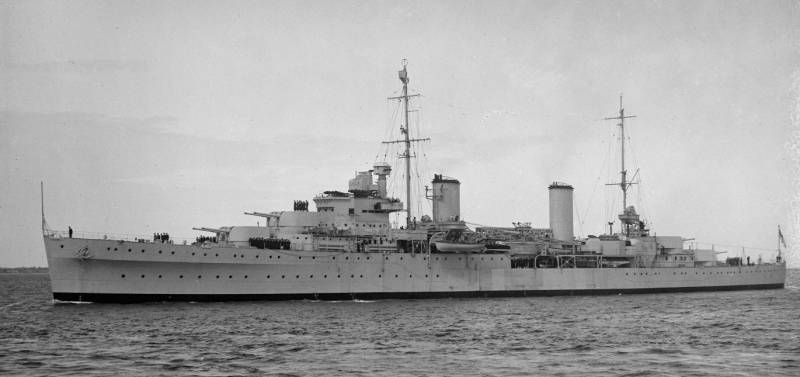
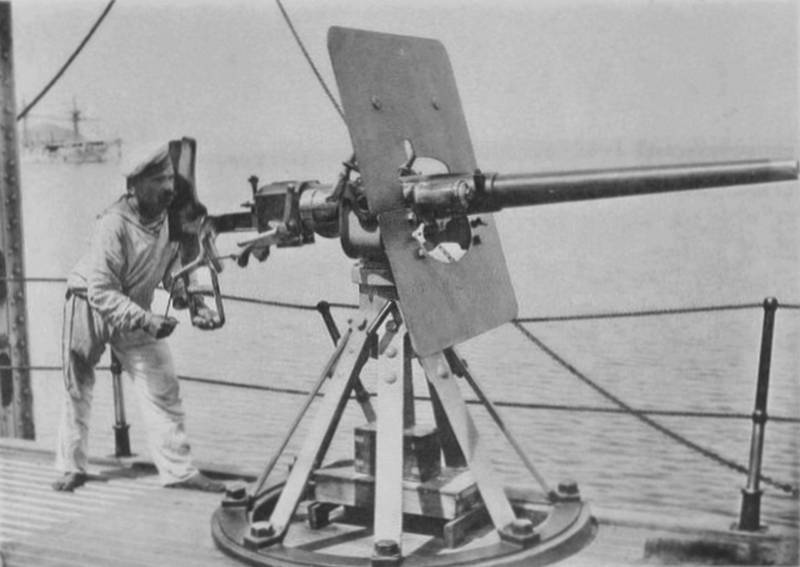
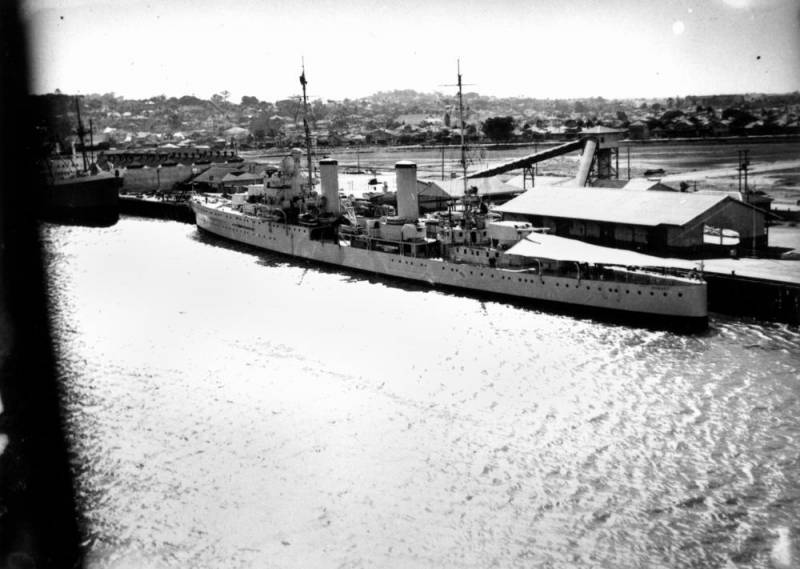
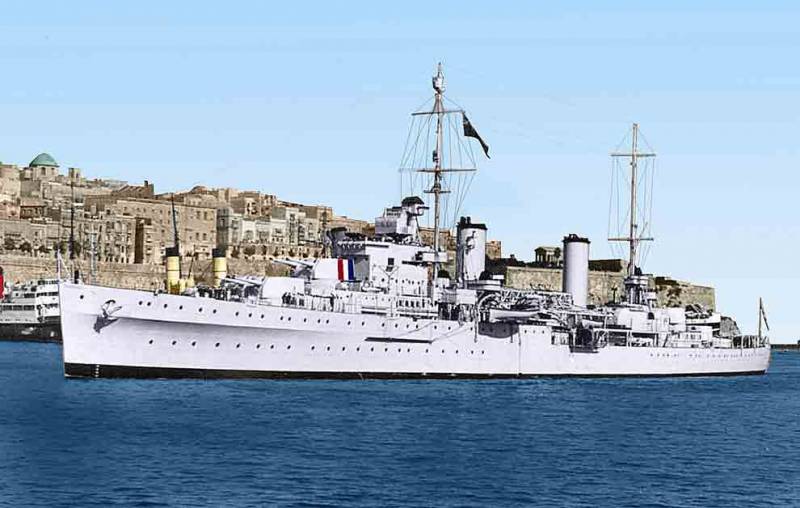
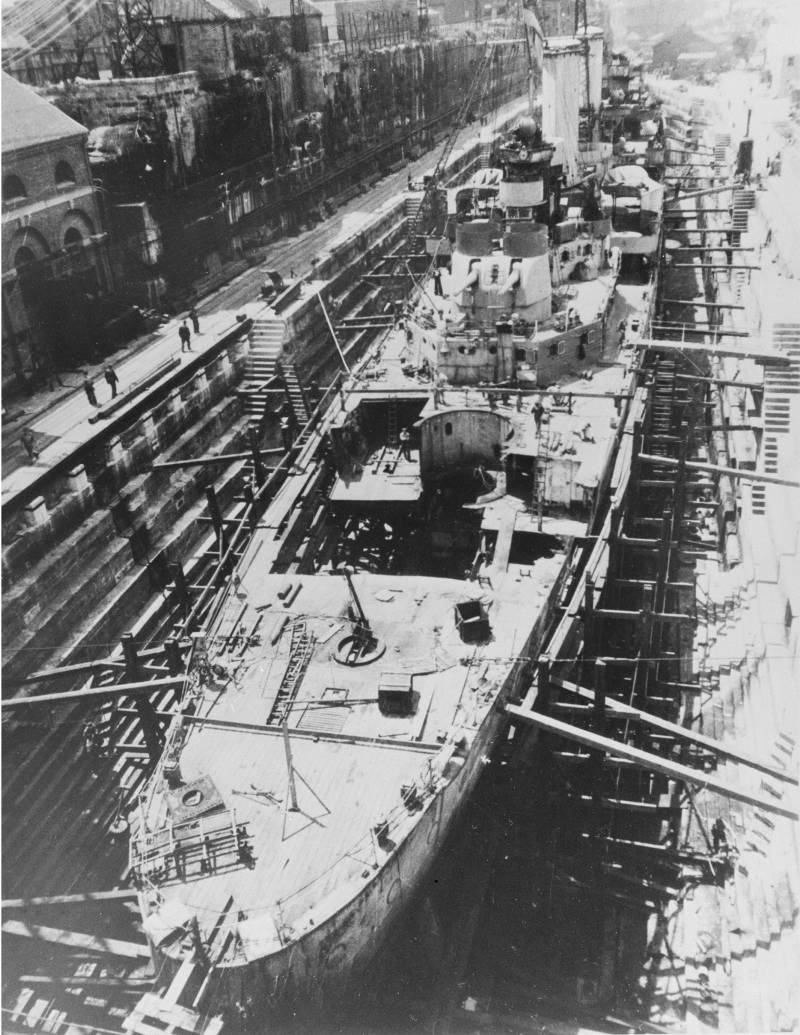
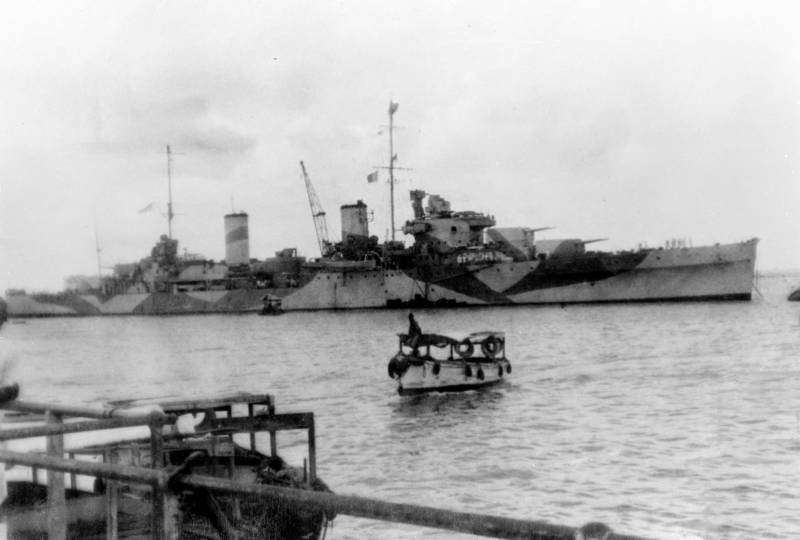
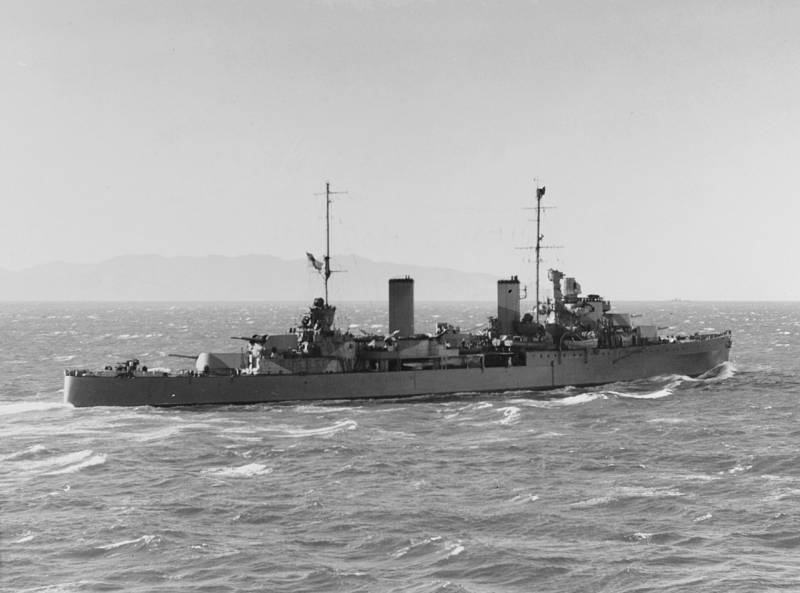
Information